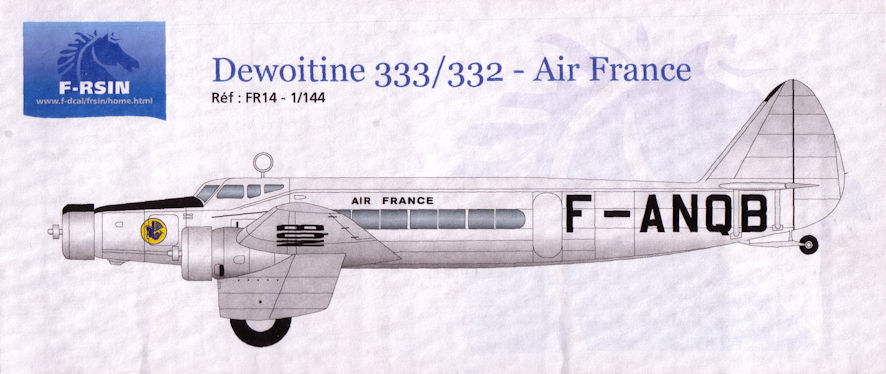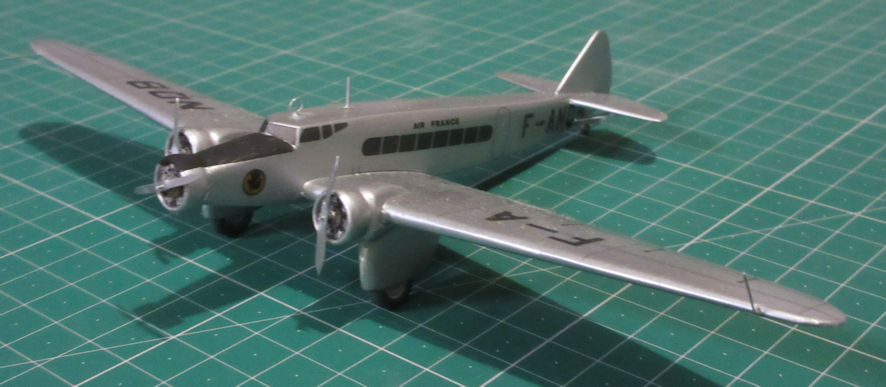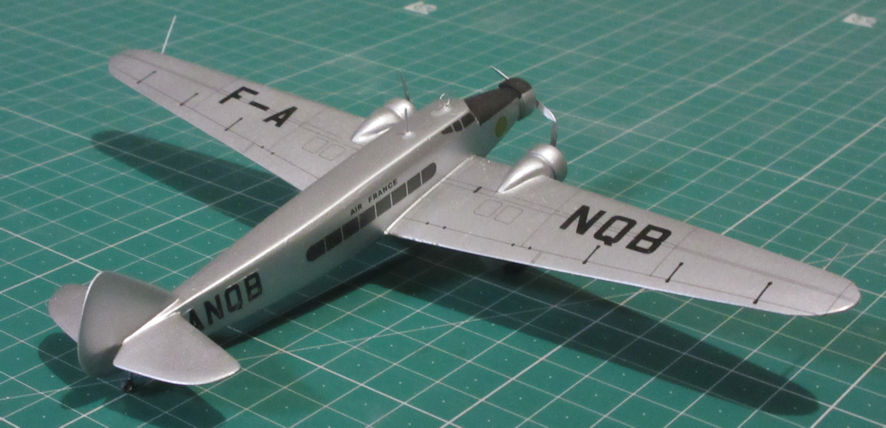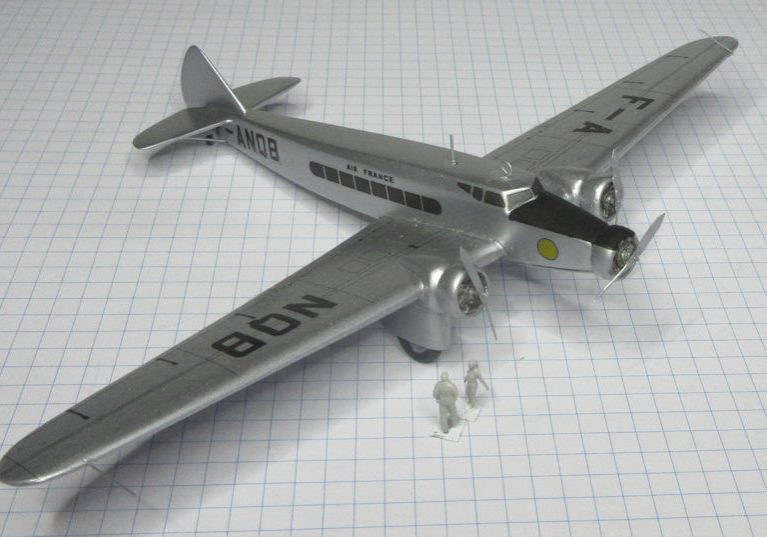In the early 1930s European countries with overseas possessions, such as the United Kingdom, the Netherlands and France, began setting up air routes to their colonies and other places where they had influence. The French had three main air routes; to Saigon in south east Asia, to possessions in Africa and through them across the South Atlantic to South America. As development of these routes began several French aviation companies were approached to build modern airliners capable of flying to these destinations.
The only company to respond was Dewoitine, leading to the construction of a single Dewoitine 332, called Emerald, for service with Air Orient on its Paris-Saigon route. It first flew on 11 July 1933 and made a number of spectacular and record breaking flights around Europe before embarking on its first flight to Saigon in December 1933. It reached its destination on 28 December in a flying time of 48 hours but crashed on the return flight only 400 kilometres from Le Bourget.
Air France was established by merging several existing airlines. It took over development of international air services and ordered three Dewoitine 333s, slightly improved and strengthened versions of the 332, for its Casablanca-Dakar services. They were of all-metal construction with a comfortable cabin for eight passengers, well insulated, ventilated and sound-proofed.
The first 333, F-AKHA, Antares, flew in January 1935, and entered service in July 1936 after extensive route testing. The two others were F-ANQB, Cassiopée, and F-ANQA, Altair, which entered service in 1937. The Antares was lost in a flight off Morocco in October 1937 and the other two flew the Toulouse-Dakar service during 1937. In December 1937 both 333s crossed the South Atlantic from Dakar to Native and flew air services based in Rio de Janeiro for several years, until they were sold to the Argentinian air force.
The Dewoitine 333 was developed into the 338 which was lengthened by 3.18 metres and had retractable undercarriage; with accommodation for 22 passengers on European services and 12 in luxury accommodation for Far-Eastern services. Air France bought 30 and the nine that remained airworthy after the war flew Paris-Nice services for several months. Two more versions were developed, the Dewoitine 342 and Dewoitine 620, with only prototypes being built, but their fate is unknown.

This is another of the delightful little F-Rsin kits that I’ve recently discovered. Being a French company the focus is on French aeroplanes, including a few inter-war airliners. The kits are fairly basic, this one comprised less than twenty pieces but the resin mouldings are nice and go together without too much trouble. The decal sheets are very nicely done and make it possible to make the Emerald and Cassiopée. One sheet has the windows and markings for Cassiopée, and different cockpit windows for Emerald, a second sheet has the registration markings for Emerald and a third sheet had two large decals for the wing upper surfaces with control surfaces and panel lines, which looked better than I had expected when applied.
There’s not much more to the kit but the person who apparently hand makes them went to the trouble of assembling the tail wheel – which was made up of a couple of pieces of soldered brass and a tiny wheel – and fashioned the propellers from plastic strip. These little touches save a lot of effort when it comes to putting the kit together.
Assembly takes no more than a couple of hours. There is nothing in the kit to indicate where on the fuselage the wings go, or the tail surfaces, or the nacelles and undercarriage trousers for that matter. There is a 3 view drawing that gives you some help but looking at any available photographs is also advisable. None of these parts fit with any great precision so plenty of filler is needed, but that is no great problem. The only real problem was the tedium of filling and filing several times, and then spraying on a grey undercoat to check how the gaps were coming along.
When the major parts were sorted out I stuck on the engine nacelles, which took a bit of fiddling, filing and fitting before I was happy that they were more or less okay. The kit nacelles are somewhat rounder than the real thing but I only figured out how to make them look better after I’d stuck them on. If I ever make another one of these I’ll know how to tackle the problem, but I can’t see that happening. So much for the value of experience.
Then it was time to do some painting. I decided to spare myself a lot of grief and used good ol’ Alclad II ‘White Aluminium’, since photos of the real thing showed that they didn’t seem to be particularly polished. After that came the pleasure of the decals, which went on nicely, more or less.
Sometimes I wonder if the people who make these micro-run kits check everything before they release their efforts on the world. In the case of this kit the problem came with the registration letters on the fuselage sides that were simply too big to fit. I solved the problem by scanning the decals before I started using them and reduced the side letters by 20 per cent so they would fit, printing them on the laser printer. If I hadn’t had these toys readily available completing this model would have been much more difficult.
After that it was time to fit all the little fiddly bits including a radio direction-finding loop, aerial post and pitot tubes on both wings. All were made out of very finely stretched sprue and only the aerial post broke off later.
The final part of the exercise was assembling and installing the engines and propellers. The engines are nicely moulded little pieces of resin and the propellers are simply formed but accurate representations of the real thing. However, the engines are fairly thin so they would disappear way back into the nacelles and the hubs seem to be designed for much wider propeller shafts than the 333 had. Consequently I spent an evening or so adding backs and hubs to the engines and shafts to the propellers. It was fiddly fun (if you like that kind of thing) and the end result is a nice little model.


Leigh Edmonds
September 2006
